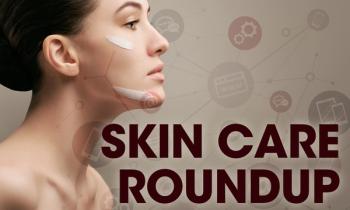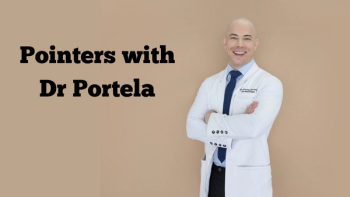
Inside DermTok: Winning TikTok Strategies
The app helps dermatologists and aesthetic physicians promote their practices, gain new clients, and share information.
Dermatologists and aesthetic physicians are using the social media platform TikTok to educate and market their practices. And it’s working.
“…TikTok holds great potential as a platform for disseminating educational information,” wrote authors of a 2021 article published in the Journal of the American Academy of Dermatology (JAAD) Online.1
And TikTok’s influence is only growing. For example, views for #acne on TikTok more than doubled from 3 billion to 6.7 billion from September 2020 to February 2021, according to the article.
Brooklyn, New York, dermatologist Angelo Landriscina, MD, started using TikTok regularly when the pandemic began. The platform in turn helped him build his dermatology practice, which he started in December 2020. Using the handle @Dermangelo and with more than 258,000 TikTok followers, Landriscina tackles topics such as skincare. He also busts social media-inspired “hacks” such as why people should not apply vodka to their faces.
“At the time, I was already active on social media, mostly on Instagram,” Landriscina says. “While my primary goal is to produce educational content for the public, many patients have found me via TikTok. Having a presence on social media has been very helpful in building my patient base.”
New York City-based celebrity cosmetic dermatologist Paul Jarrod Frank, MD, uses the handle @drpauljarrodfrank on TikTok. He capitalizes on social media platforms to drive traffic to his PFRANKMD aesthetic health care brand.
“At the end of the day, everything we do on social media is educational and leads back to the [return on investment] of bringing in new patients and building brand awareness,” Frank says. “TikTok is a platform where content needs to be quick and digestible, and it allows us to take our creativity to the next level, while still providing educational content.”
Frank discovered TikTok’s power when he contracted COVID-19.
“It was a very scary time, and I wanted to openly share my experience to educate others who may have been going through the same thing,” Frank says. “As one of the first people to document my COVID-19 journey, my videos began to go viral and started important conversations. My educational COVID-19 videos got over 4000 comments and reached over 3 million people all over the world. Our treatment videos also go viral as they show eye-catching procedures and results that followers may have never seen before.”
About TikTok
Despite being banned in some countries, TikTok is the seventh most-used social network with 689 million active users worldwide as of January 2021. The majority of TikTok users in the US are younger than 30, according to Hootsuite.com.2
“Social media platforms such as TikTok are changing the way we connect and interact,” Szeto et al wrote in an article published in April 2021 in the Journal of the American Academy of Dermatology.3
TikTok offers a constant, addictive stream of short, catchy videos curated for users, with the potential for cross-generational appeal. It is user-friendly and shows viewers videos based on their interests, according to an email to Aesthetic Authority™ from 2 of the article’s authors, Colby Presley, DO, a practitioner in the Department of Dermatology at Lehigh Valley Health Network in Allentown, Pennsylvania; and Mindy Szeto, MS, Department of Dermatology at the University of Colorado in Aurora.
“Typically, TikTok users post and seek out content they enjoy, things they’re passionate about,” they wrote. “They can also ‘duet’ to build on existing videos and communicate with people around the world in real time, so it becomes easy to make and develop those human connections. Our published study also highlighted how TikTok videos are unique because they can be posted to Instagram as Reels. With this capability, TikTok can make its videos available on both their application and Instagram, presently the largest social media application by follower numbers. [Although] TikTok is currently used heavily in the younger generation, Instagram has a wider age range of users and those Instagram users can see TikTok videos.”
TikTok Tips
Providers can leverage the fact that consumers and patients are using TikTok to discover and discuss medical information to directly connect with the public, as well as promote their brand and practice, Presley and Szeto wrote.
“Interactive ‘duets’ are very popular on highly viewed skin care videos, and we encourage providers to use this feature to be a presence and provide guidance on what medical advice videos say and do,” the authors wrote. “However, it’s also very important, and we recommend, that providers conduct themselves ethically, being aware of privacy and confidentiality, explicitly disclosing conflicts of interest, and maintaining professional boundaries, among other social media best practices. Furthermore, the amount of inaccurate or misleading health care information being shared on these platforms is high. We hope that greater provider presence on social media can help dispel some of the health care myths.”
TikTok, as with most social media sites, does not verify users’ credentials. So anyone can say they are a medical professional and provide medical advice, according to Presley and Szeto.
Frank says TikTok gives him the opportunity to set the record straight on important safety measures such as the use of at-home hyaluronic lip fillers.
Some dermatology and aesthetic topics or themes really seem to strike a chord with TikTok users.
“Recent topics that have done well on my page include using benzoyl peroxide for acne, tips for saving money on prescription drugs, and the lack of data behind using rice water for hair growth,” Landriscina says.
To make TikTok work for their practices, clinicians need to spend time on the app. “[TikTok] is not the same as other social media platforms, so you should familiarize yourself with the types of content that people respond to, see what kinds of content end up as trends, and absorb the overall vibe before producing anything yourself,” Landriscina says.
Users may ask clinicians who post on the app for individual medical advice, Landriscina cautions.
“Keep in mind that answering these requests is not considered ethical,” Landriscina says. “A good way to keep people happy is to see what topics people ask about frequently and produce educational videos about [those topics].”
Having Fun with Content Creation
Landriscina says he was successful on TikTok because he went into it without expectations and to produce content that he likes.
“People can tell if you’re enjoying yourself or not,” Landriscina explains.
It is OK to get a little bit personal, according to Frank, who uses his hobbies, including cooking and roller-skating, in his TikTok videos.
“It’s ok to experiment with different forms of content as long as it’s authentic and true to yourself and your brand,” Frank says. “It’s nice to get a glimpse into someone’s personal life.”
References:
1. Kassamali B, Villa-Ruiz C, Mazori DR, Min M, Cobos GA, LaChance AH. Characterizing top educational TikTok videos by dermatologists in response to “TikTok and dermatology: An opportunity for public health engagement.” J Am Acad Dermatol. 2021; 85(1):e27-e28. doi:10.1016/j.jaad.2021.02.051
2. Sehl K. 23 important TikTok stats marketers need to know in 2021. Hootsuite. May 5, 2021. Accessed May 18, 2021.
3. Szeto MD, Presley CL, Pulsipher KJ, et al. Dermatologist influencers on social media: Instagram Reels and TikTok interactive short videos. J Am Acad Dermatol. 2021;85(3):e185-e188. doi:10.1016/j.jaad.2021.04.052
Newsletter
Like what you’re reading? Subscribe to Dermatology Times for weekly updates on therapies, innovations, and real-world practice tips.















